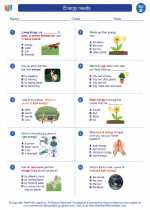Transpiration
Transpiration is the process through which moisture is carried through plants from roots to small pores on the underside of leaves, where it changes to vapor and is released to the atmosphere. It is an important part of the water cycle and helps to move water and nutrients from the soil to the rest of the plant.
How does transpiration work?
Transpiration works through a combination of processes. First, water is taken up by the roots from the soil and transported to the leaves through the xylem vessels. Once in the leaves, water molecules move to the surface of the leaf and then evaporate into the surrounding air, a process known as evapotranspiration. This creates a negative pressure in the leaf which helps to pull more water up from the roots, maintaining a continuous flow of water through the plant.
Factors affecting transpiration
Several factors can affect the rate of transpiration in plants:
- Temperature: Higher temperatures can increase the rate of transpiration as more water evaporates from the leaves.
- Humidity: Lower humidity levels can increase transpiration, as the concentration gradient between the leaf and the air is steeper.
- Wind: Wind can help to remove water vapor from the area around the leaf, increasing the rate of transpiration.
- Light: Light stimulates the opening of stomata, the tiny openings on the surface of leaves, which can increase transpiration.
Importance of transpiration
Transpiration is important for several reasons:
- It helps to transport water and nutrients from the soil to the rest of the plant.
- It cools the plant, much like sweating cools our bodies, helping to prevent overheating.
- It helps to maintain turgor pressure in the plant, keeping it upright and providing support for leaves and stems.
Study Guide
Here are some key points to remember about transpiration:
- Transpiration is the process through which plants release water vapor into the atmosphere.
- It is driven by a combination of processes including evaporation, cohesion, and adhesion.
- Factors affecting transpiration include temperature, humidity, wind, and light.
- Transpiration is important for transporting water and nutrients, cooling the plant, and maintaining turgor pressure.
◂Science Worksheets and Study Guides Second Grade. Energy needs

 Worksheet/Answer key
Worksheet/Answer key
 Worksheet/Answer key
Worksheet/Answer key
 Worksheet/Answer key
Worksheet/Answer key
